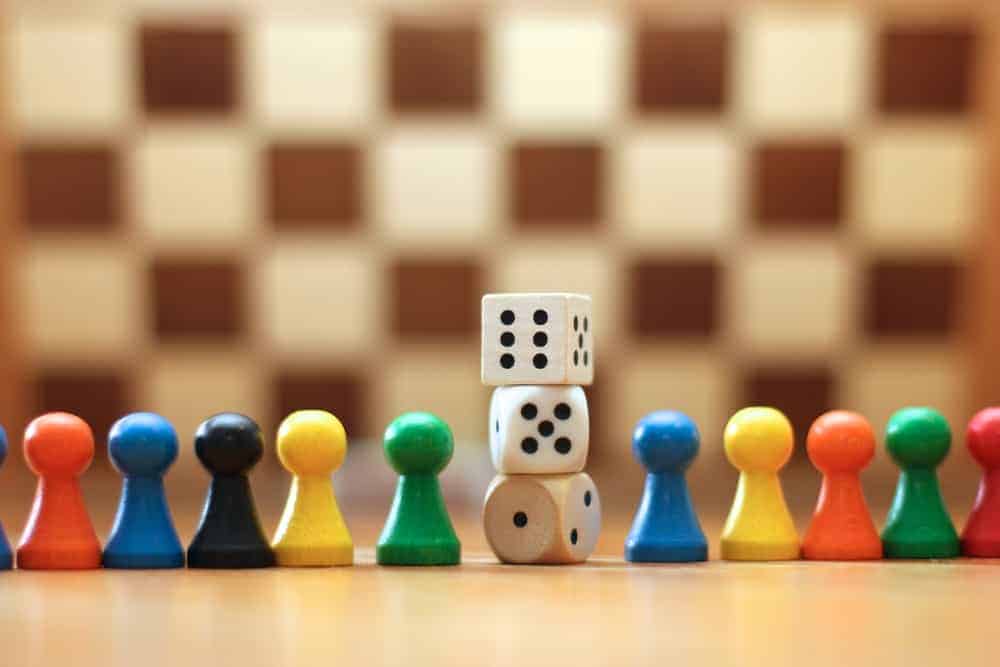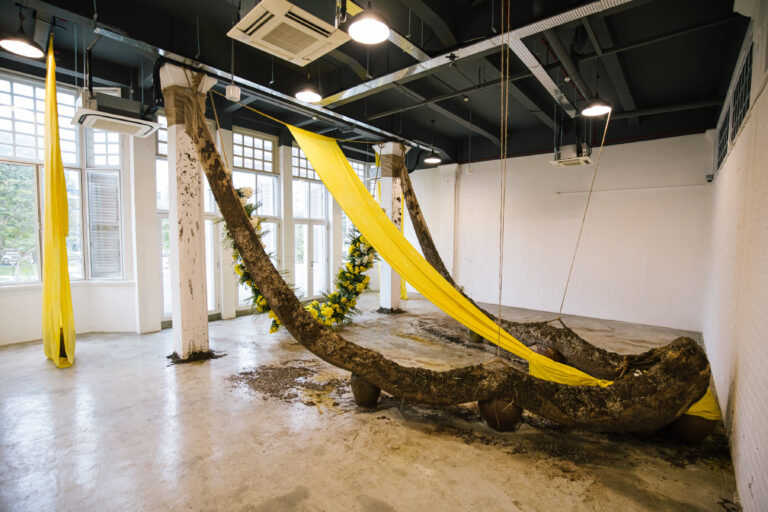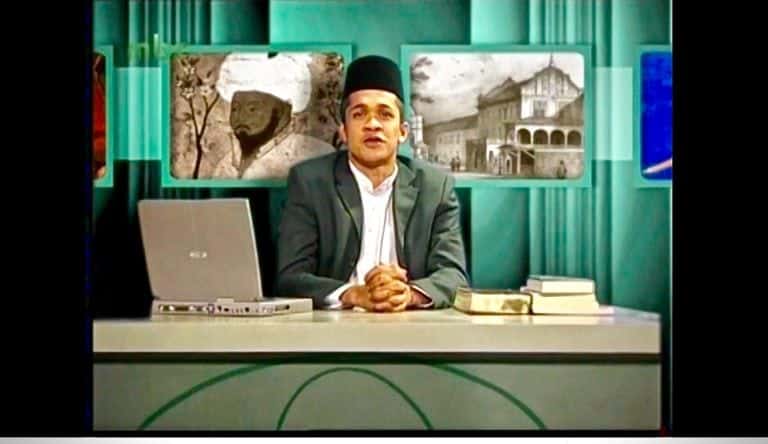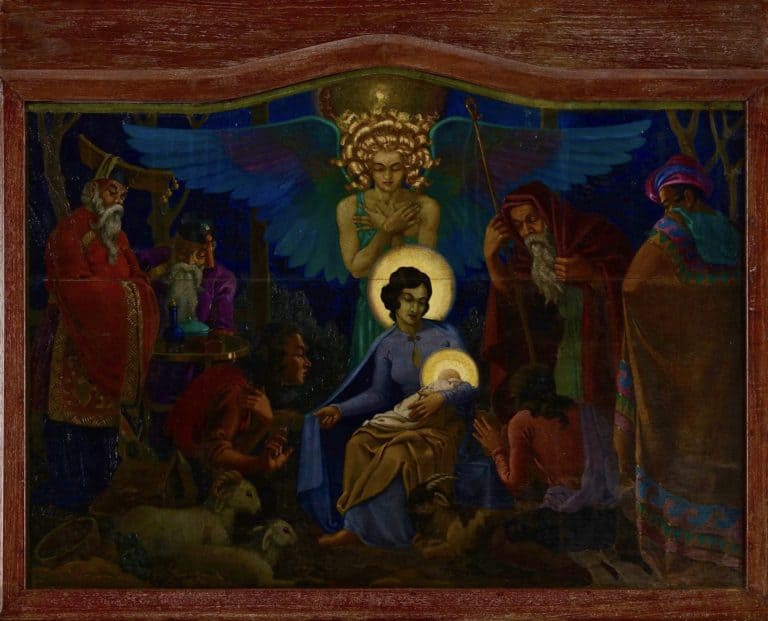What do you see when you look at a board game like Monopoly or chess? Little figurines moving along a checkered path, or players huddled around holding fake money, throwing dice. For me, after two years of immersing myself in the board game design and publishing industry, those images barely scratch the surface of this intersection between business and art – from financial viability models, to balancing the creativity of design against artistic statement, and whether to follow or buck popular trends.
Down that rabbit hole you’ll find a flourishing international movement of board games that not many people know about: a crowdfunding-centric collectors market; a growing industry of independent producers, reviewers and taste-makers; active philosophical discussions highlighting the merits of ‘ameritrash’ versus ‘eurogames’; and the board game equivalent of an arts festival circuit, the foremost being the Internationale Spieltage in Essen, Germany. Some industry veterans have even proclaimed that we are now living in a golden age of board games although, in perspective, board games are still dwarfed by the colossal video games industry.
Politiko is a Malaysian card game. Released in 2012, it costs RM38 a copy. It was displayed as one of many artworks or “cultural projects” at the ILHAM Contemporary Forum (ICF) exhibition 2017. So what does it mean for a game, specifically a card game based on Malaysian politics, to be part of an art exhibition?
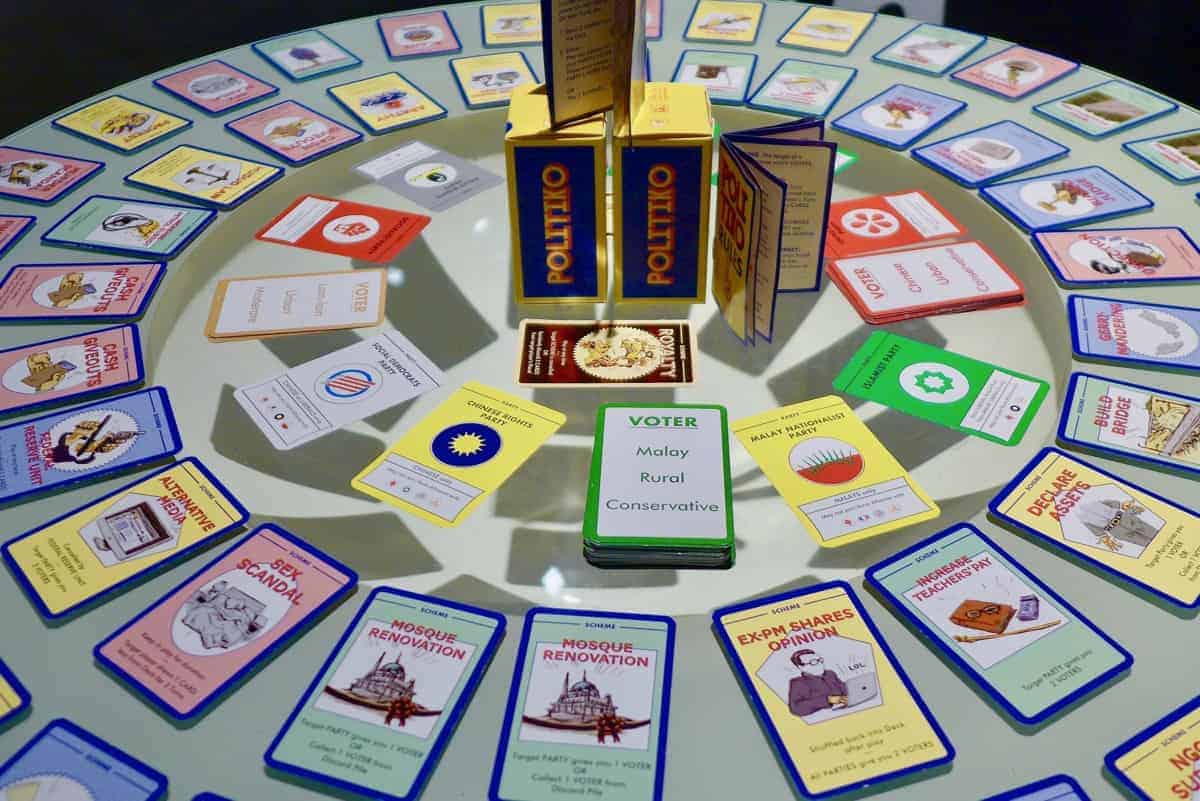
The true significance of Politiko’s presence in the exhibition – how it follows and comments on the logic of local politics – is in its game mechanics. By “game mechanics”, I mean the interaction between player agency, the game components and rules. Without any of these mechanics, a game simply is not a game. Players must be able to make meaningful choices (agency) within the logical boundaries of the game (rules), informed by internally-defined material stakes (components).
In Politiko, players take on the role of a leader of a political party in Malaysia in their quest to achieve supremacy. They win the game if they can amass a certain number of voters (components). However, different political parties can only attract certain kinds of voters (rules), and players have to decide how best to achieve the winning combination – for example, do I try to slowly but stealthily amass voters or aggressively scheme to steal their voters away from my fellow players?

The above description is the essence of the game but offers only a glimpse of its procedural rhetoric. A term coined by Ian Bogost in his book Persuasive Games: The Expressive Power of Videogames, procedural rhetoric is “the art of persuasion through rule-based representations and interactions, rather than the spoken word, writing, images, or moving pictures”. Procedural rhetoric is the one thing that differentiates games from any other media, and radically so in our new golden age of board and video games.
In the game, it is the element of immersion that blurs the boundary between (your)self and the role you temporarily inhabit. It forces you to think according to the new logics of the very system you are simulating, and then asks you to reflect and derive your own understanding of what that simulated logic and system represents in the real world. In Politiko’s case, its creators Zedeck Siew and Mun Kao, have on several occasions expressed that its creation was borne out of their own frustration with Malaysia’s electoral system, which reifies voters based on racial, urban-rural and conservative-liberal divides.
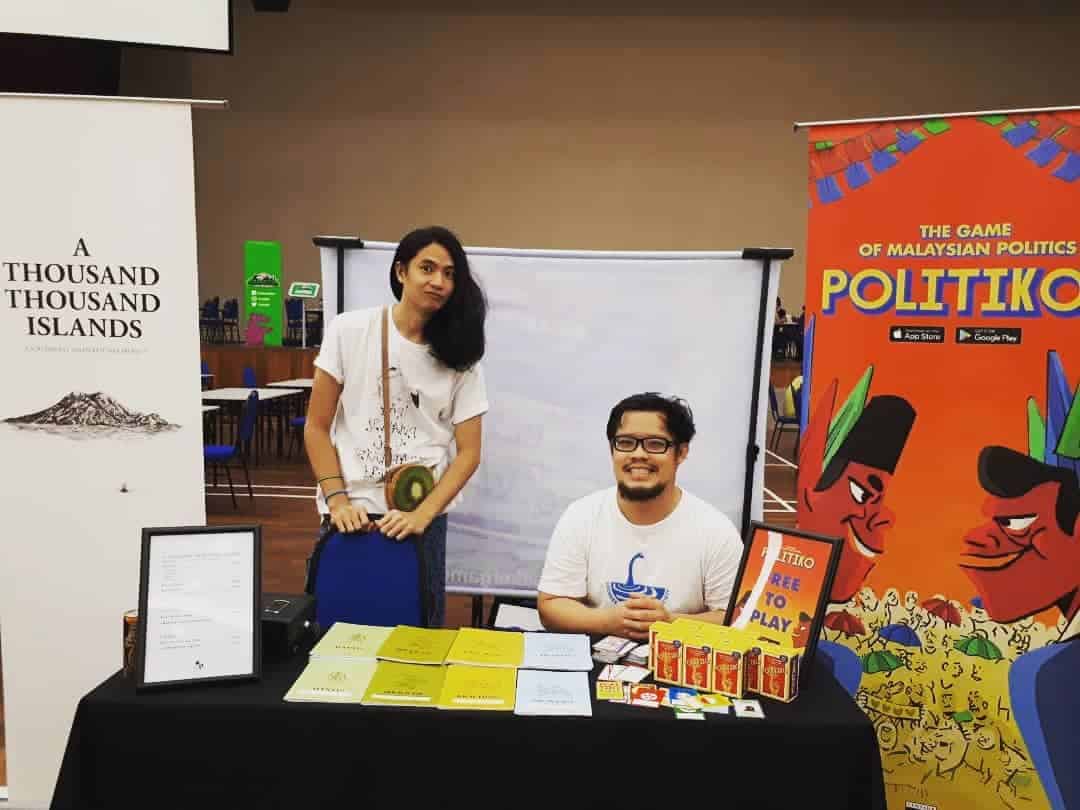
But trust me, you need to play it to feel how dirty you need to get in order to win in Malaysian politics. I’ll happily play my “royalty” trump card to prevent your party from actually reforming its racist ways – regardless of how much I detest racism. Cold shower to follow.
So it pains me to see that the curation of Politiko in ICF approximates a display of curiosities rather than an actual play session in which its interactivity, immersion and procedural rhetoric can be conveyed to audiences. The component cards are laid out in a concentric, circular fashion on a table. Chairs are placed under the table implying that one should sit. But the tidy, meticulous layout, combined with the norm of the traditional white box gallery space, visually implies that one should not touch the artwork. But if one cannot touch a board game, how is one to play it and experience it? I asked if we could indeed play it, and the gallery sitter said we could bring one of their spare copies of Politiko to a bench a bit further away. That was neither a conducive nor intuitive play space.
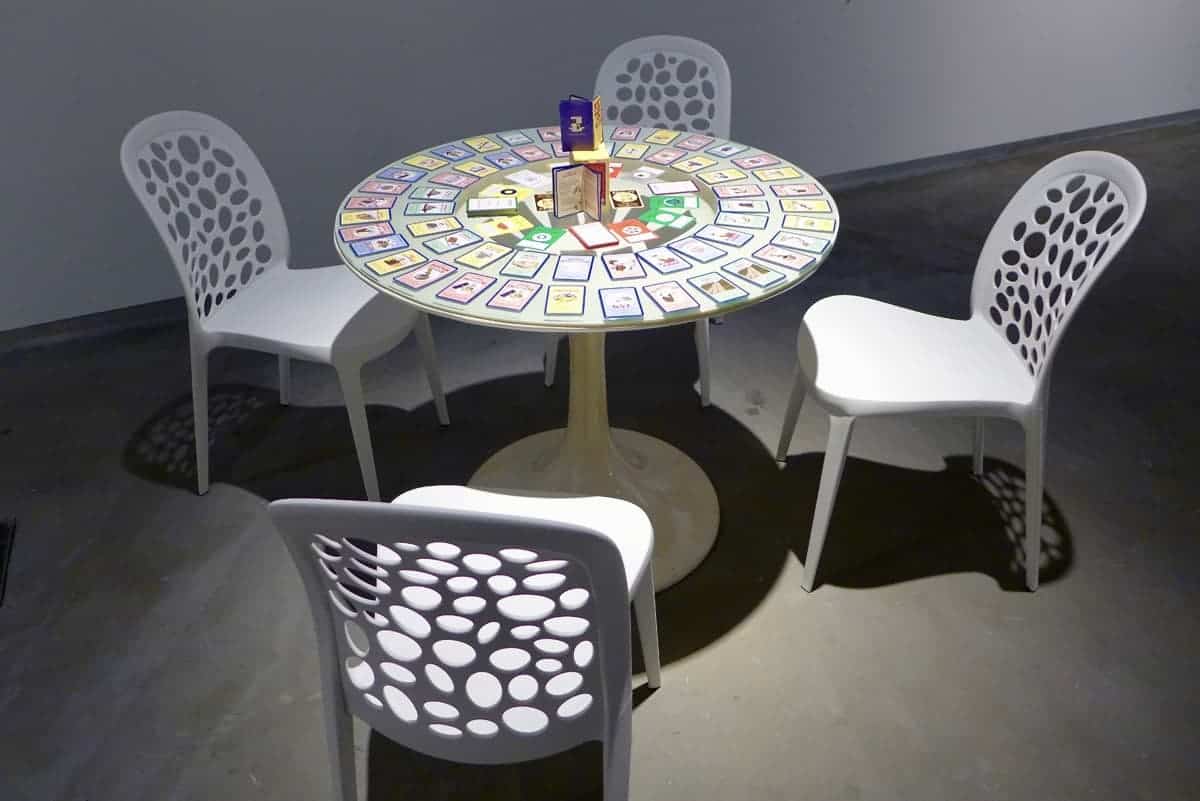
To be fair, Politiko is a mass market card/board game – which means there’s no right way to “display” it as an art object. The curators may have felt they should display the game in an attractive manner coherent with the rest of the exhibition. But that reduces the game to little more than a collection of cheeky drawings printed on cards – the same as displaying a tarot set for its art, but decontextualising its historical cultural significance as a tool of divination. At its worst, such a display suggests merely that Malaysian politics has got to a point that a card game can be made about it, but the more subtle commentary that comes from the experience of playing the game is glossed over.
Soon after its publication, then-opposition political parties used Politiko as a way to bridge the gap with the youth. The highest profile event I know of was a staged play session between MPs Dr Ong Kian Ming, Nurul Izzah Anwar and other NGO representatives at an arts and crafts fair at a shopping centre in 2016. Politiko’s first publication run was funded by LoyarBurok, a non-profit activist organisation which used the game for voter education.
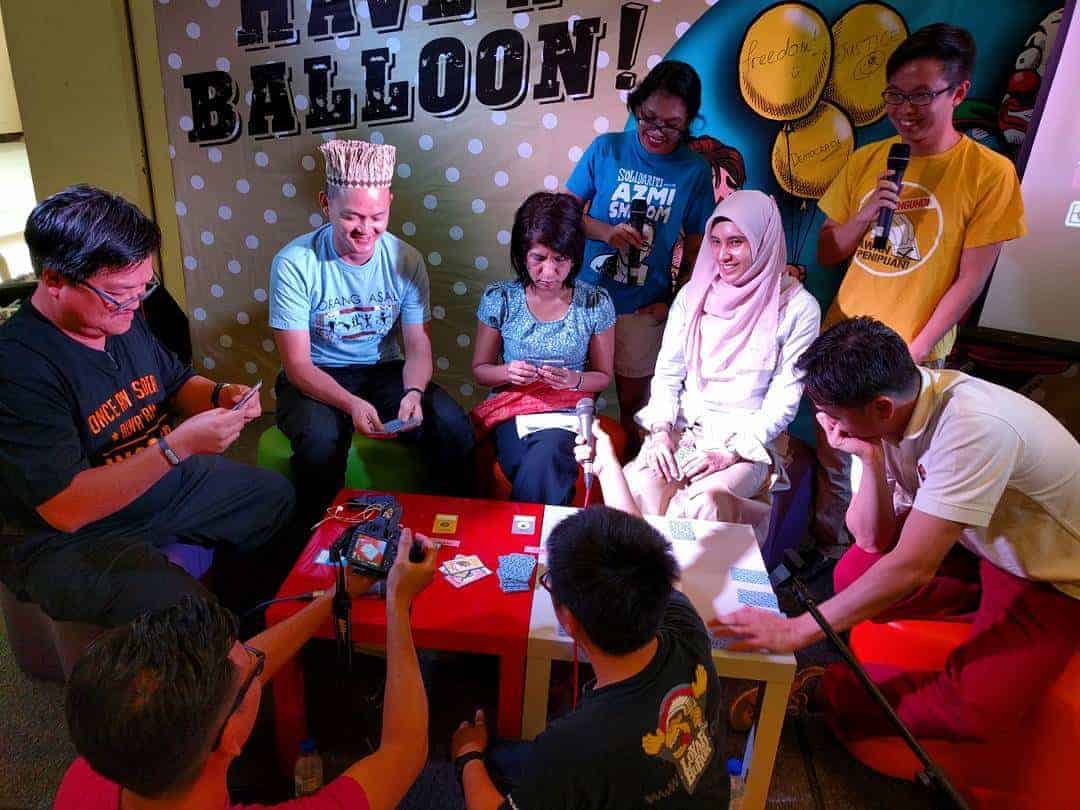
Today, Politiko has an estimated print run of at least 5,000 copies – relatively successful if you compare it to your typical books of political essays on Malaysia.
Besides its political significance, Politiko was also responsible for breaking ground and paving the way for other locally-made modern board games to enter the Malaysian market. While Politiko did not manage to find its way into our everyday bookstores, many board game cafes carried and continue to carry ready stock. Internationally, Zedeck and Mun Kao have worked with other stakeholders in Taiwan and India to create their own versions of Politiko to describe their own respective dysfunctional politics through the medium of a card game.
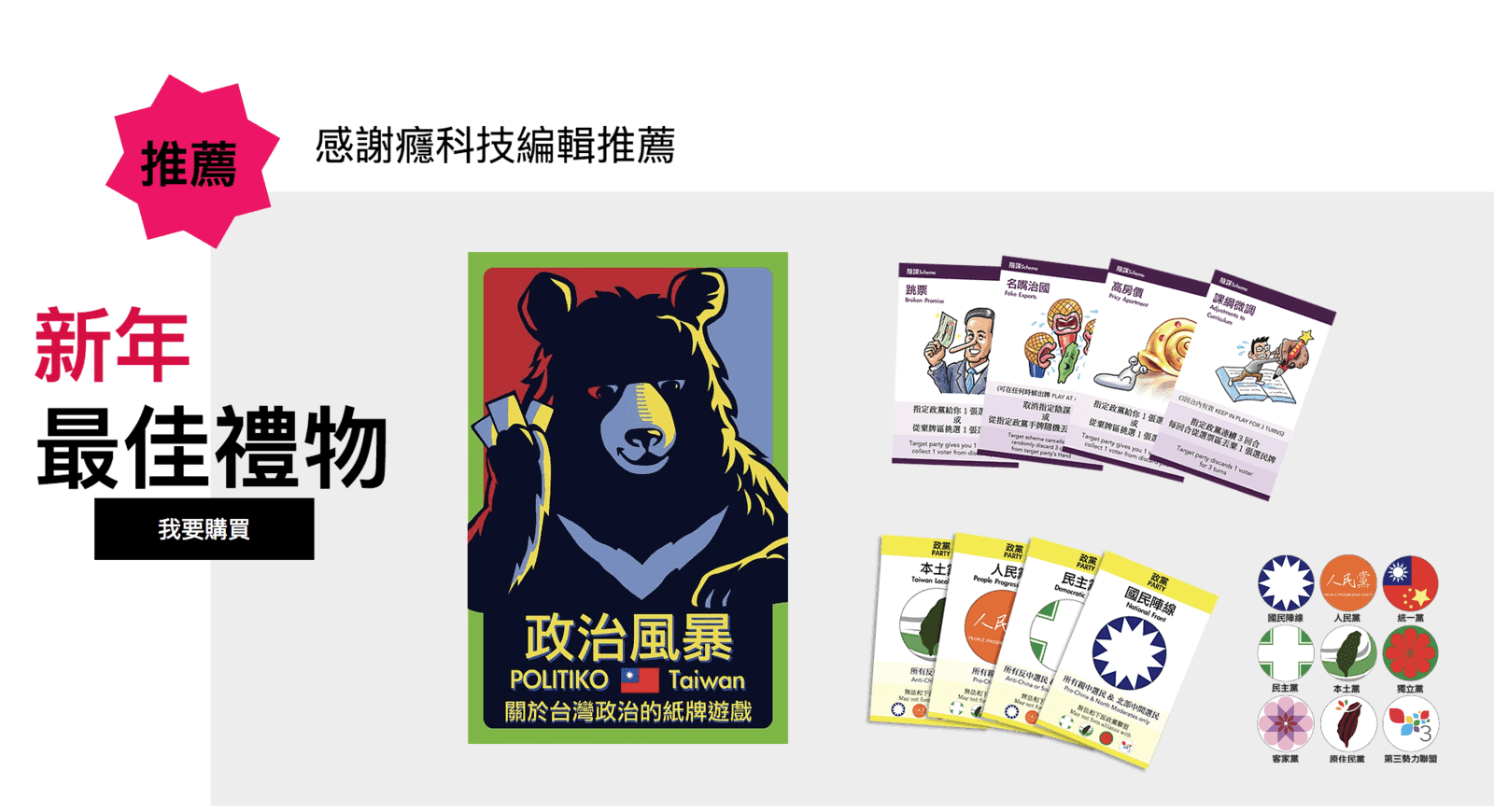
By going international, Politiko’s re-application into other political contexts calls to mind what media scholar Anne Marie Schleiner calls “ludic mutation”. Schleiner argues that players can exercise a higher level of agency when changing the very rules of the game, thus changing the procedural rhetoric. The realisation that the narrative changes between the original and the mutated/hacked/adapted game is a launching point for activism, and in the Politiko case, intercultural dialogue.
Zedeck and Mun Kao as artists themselves, have also admitted such a phenomenon occurring in the process of creating the Sabah and Sarawak expansion set. (An expansion set is an official modification offering additional gameplay components and rules.) But with such additions, Zedeck has admitted that the addition of Sabah and Sarawak as an expansion rather than being part of the core set highlighted his own peninsular-centricity.
So how might one curate card and board games in an exhibition?
A recent Goethe Institute exhibition, Games and Politics, which focused on political video games, allowed all their curated games to be played in full through computer consoles available throughout their exhibit. When not being played, the consoles switched automatically to a demo film with third-party commentary. Similarly, for card and board games, a short video of a small segment of each game being played could provide a taste of their procedural rhetorics. And, of course, there should be specifically designed spaces for visitors to play the games, if they should choose to do so.
Finally, curators can embrace the fact that a conversation can spring forth from ludic mutation, much like how art should be the starting point of a deeper conversation. Exhibitions can go further in encouraging visitors to make up their own rules or to write their own cards as part of deeper reflection.
A game is a simplified model of a part of our world. So as part of an art exhibit, perhaps it’s not too much to say there’s a little education to be found in playing with a model of the world we don’t normally experience. For some, it might be merely entertainment, but we can embrace its potential for change.
Note: This text derives from the author’s entry for the ILHAM Contemporary Forum (ICF) essay competition, organised by ILHAM Gallery as part of its ILHAM Contemporary Forum Project of 2017, in which he emerged as one of the three winners that the jury selected.
